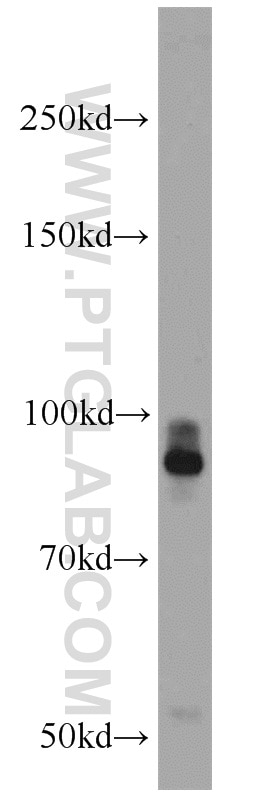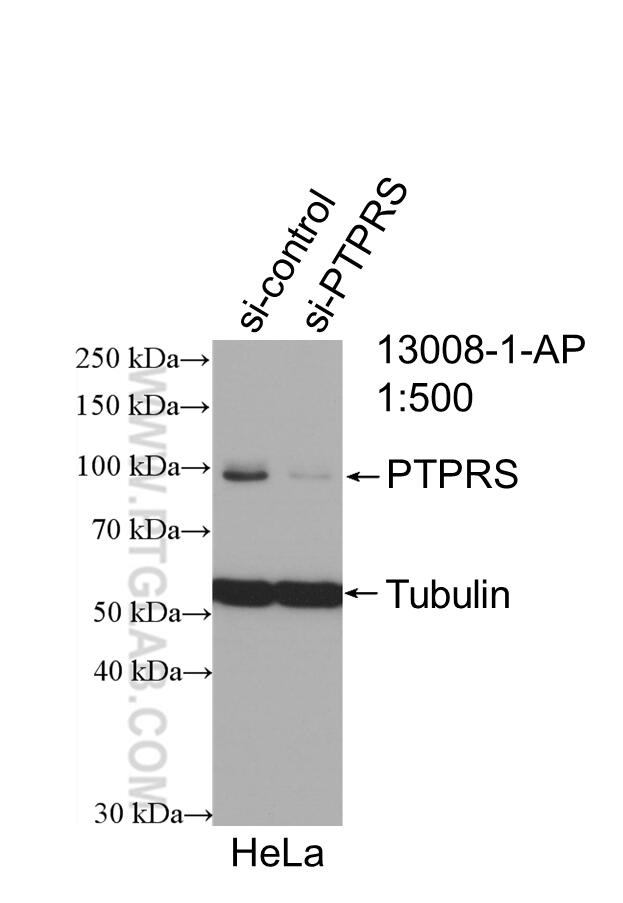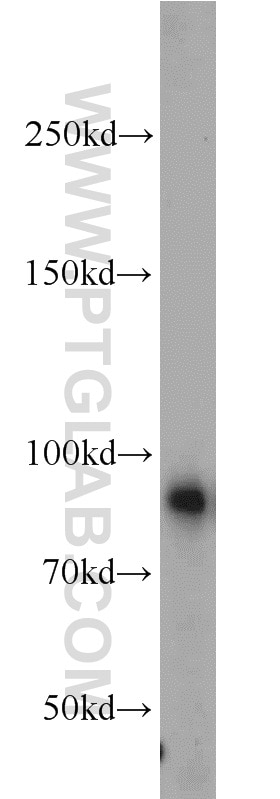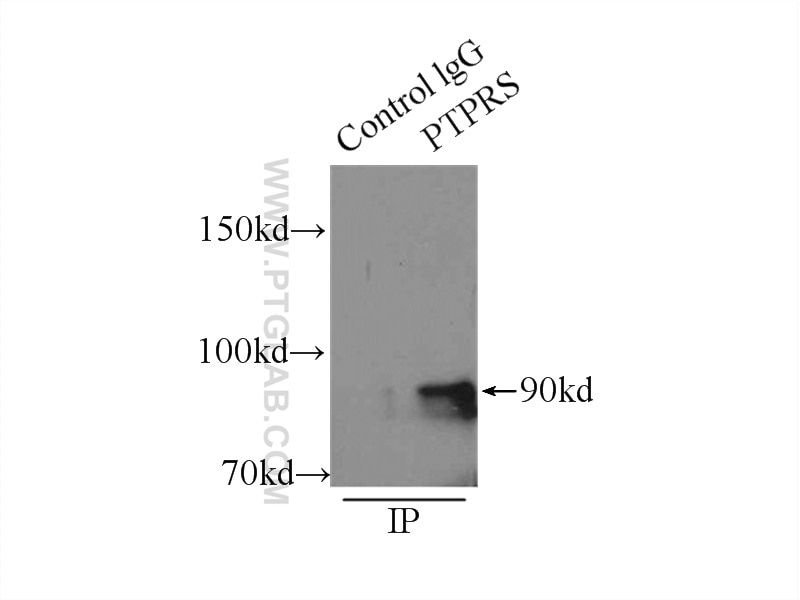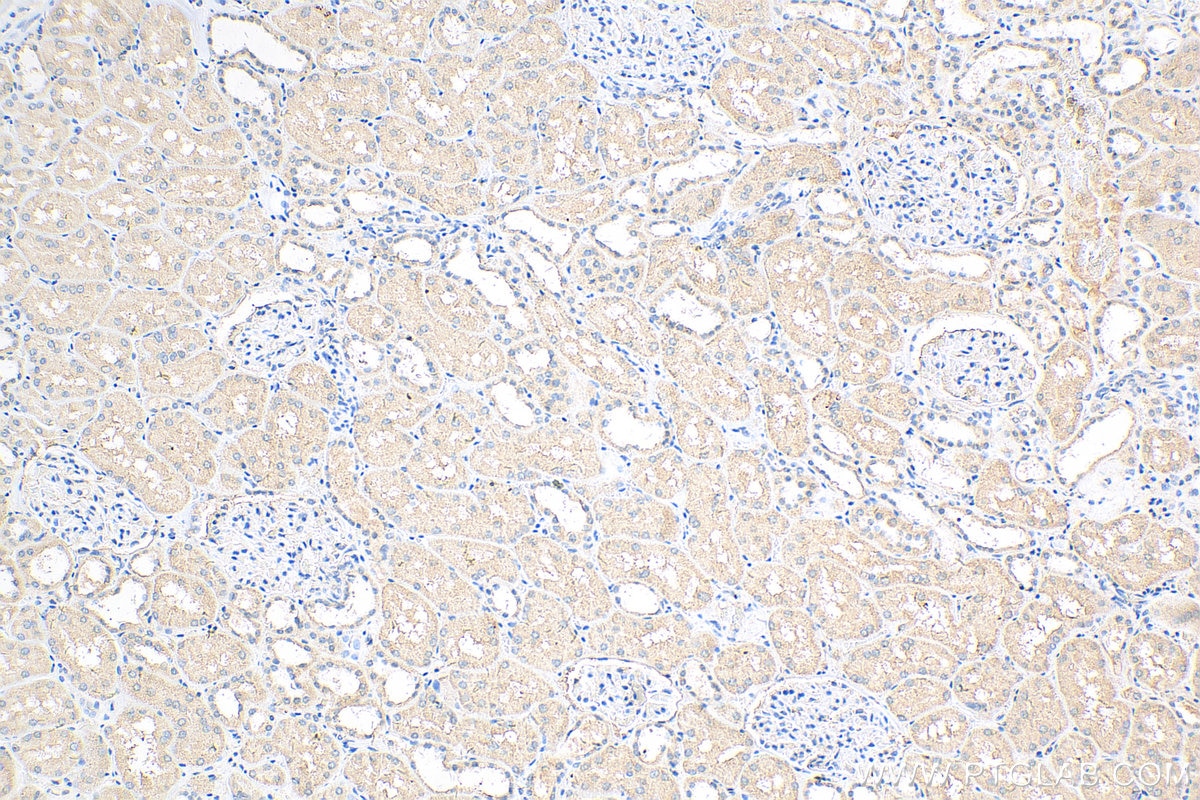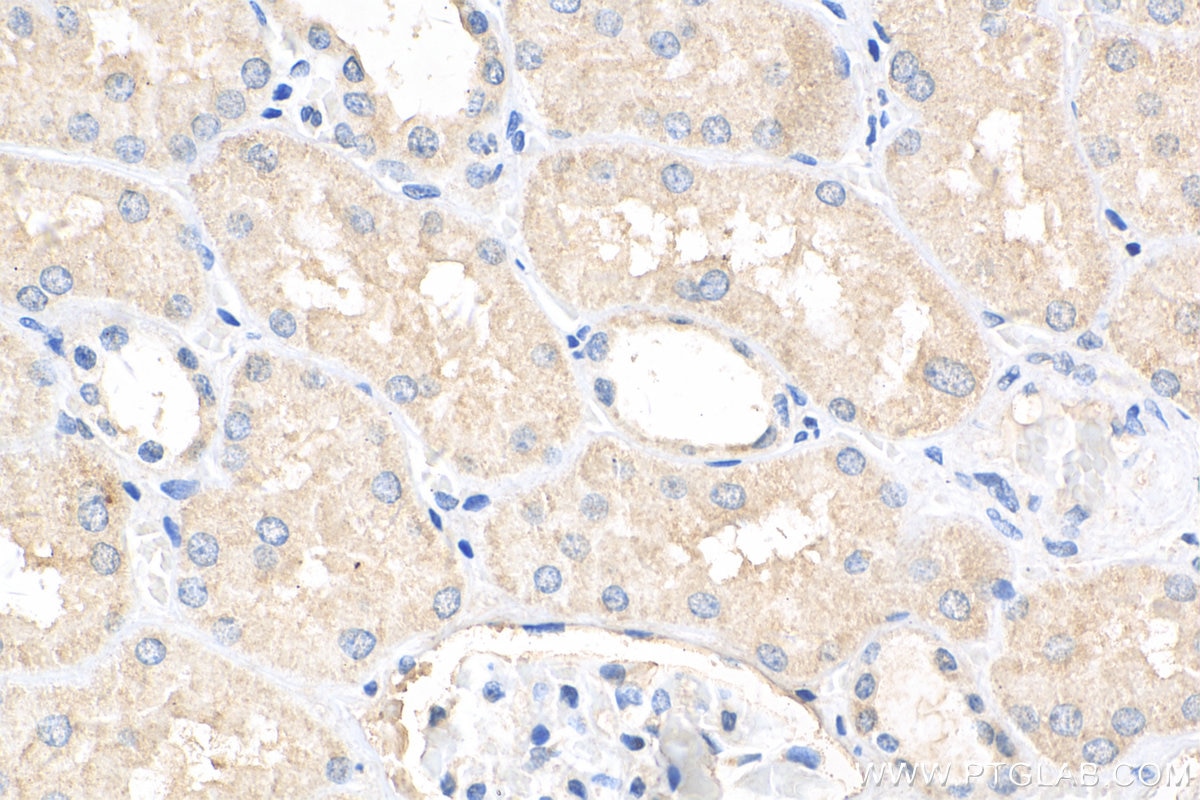Validation Data Gallery
Tested Applications
| Positive WB detected in | HeLa cells, mouse brain tissue |
| Positive IP detected in | mouse brain tissue |
| Positive IHC detected in | human kidney tissue Note: suggested antigen retrieval with TE buffer pH 9.0; (*) Alternatively, antigen retrieval may be performed with citrate buffer pH 6.0 |
Recommended dilution
| Application | Dilution |
|---|---|
| Western Blot (WB) | WB : 1:500-1:1000 |
| Immunoprecipitation (IP) | IP : 0.5-4.0 ug for 1.0-3.0 mg of total protein lysate |
| Immunohistochemistry (IHC) | IHC : 1:50-1:500 |
| It is recommended that this reagent should be titrated in each testing system to obtain optimal results. | |
| Sample-dependent, Check data in validation data gallery. | |
Published Applications
| KD/KO | See 1 publications below |
| WB | See 8 publications below |
| IHC | See 3 publications below |
| IF | See 1 publications below |
Product Information
13008-1-AP targets PTPRS in WB, IHC, IF, IP, ELISA applications and shows reactivity with human, mouse, rat samples.
| Tested Reactivity | human, mouse, rat |
| Cited Reactivity | human, mouse, rat |
| Host / Isotype | Rabbit / IgG |
| Class | Polyclonal |
| Type | Antibody |
| Immunogen | PTPRS fusion protein Ag3691 相同性解析による交差性が予測される生物種 |
| Full Name | protein tyrosine phosphatase, receptor type, S |
| Calculated molecular weight | 128aa,14 kDa; 1948aa,217 kDa |
| Observed molecular weight | 75-100 kDa |
| GenBank accession number | BC029496 |
| Gene Symbol | PTPRS |
| Gene ID (NCBI) | 5802 |
| RRID | AB_10858319 |
| Conjugate | Unconjugated |
| Form | Liquid |
| Purification Method | Antigen affinity purification |
| UNIPROT ID | Q13332 |
| Storage Buffer | PBS with 0.02% sodium azide and 50% glycerol , pH 7.3 |
| Storage Conditions | Store at -20°C. Stable for one year after shipment. Aliquoting is unnecessary for -20oC storage. |
Background Information
Type II a receptor protein tyrosine phosphatases (rPTPσ) are cell surface receptors important for nervous system development, function, and repair.The expression of rPTPσ has previously been reported in b-cells and other target organs for INS although the probes chosen did not permit to distinguish between the splice variants.Proteolytic processing near the transmembrane domain generates an extracellular N-terminal E-domain of 130 kDa and a C-terminal P-domain of approximately 85 kDa of rPTPσ,and the short splice variants rPTPσ 3 and 4 contain an E-domain of 95 kDa (PMID: 16552719). rPTPσ expression was observed in tissue lysates of the adult mouse sensory-motor cortex and thoracic spinal cord (T8-T10) as a 75-80kDa immunoreactive band (PMID: 19780196).
Protocols
| Product Specific Protocols | |
|---|---|
| WB protocol for PTPRS antibody 13008-1-AP | Download protocol |
| IHC protocol for PTPRS antibody 13008-1-AP | Download protocol |
| IP protocol for PTPRS antibody 13008-1-AP | Download protocol |
| Standard Protocols | |
|---|---|
| Click here to view our Standard Protocols |
Publications
| Species | Application | Title |
|---|---|---|
ACS Chem Neurosci Small Molecules Targeting PTPσ-Trk Interactions Promote Sympathetic Nerve Regeneration. | ||
J Gene Med Downregulation of lncRNA HCG11 promotes cell proliferation of oral squamous cell carcinoma through sponging miR-455-5p. | ||
Curr Eye Res Expression of Perineuronal Nets, Parvalbumin and Protein Tyrosine Phosphatase σ in the Rat Visual Cortex During Development and After BFD. | ||
J Cell Biochem Chondroitin sulfate proteoglycan represses neural stem/progenitor cells migration via PTPσ/α-actinin4 signaling pathway. | ||
Aging Cell Chronic TNF exposure induces glucocorticoid-like immunosuppression in the alveolar macrophages of aged mice that enhances their susceptibility to pneumonia |
